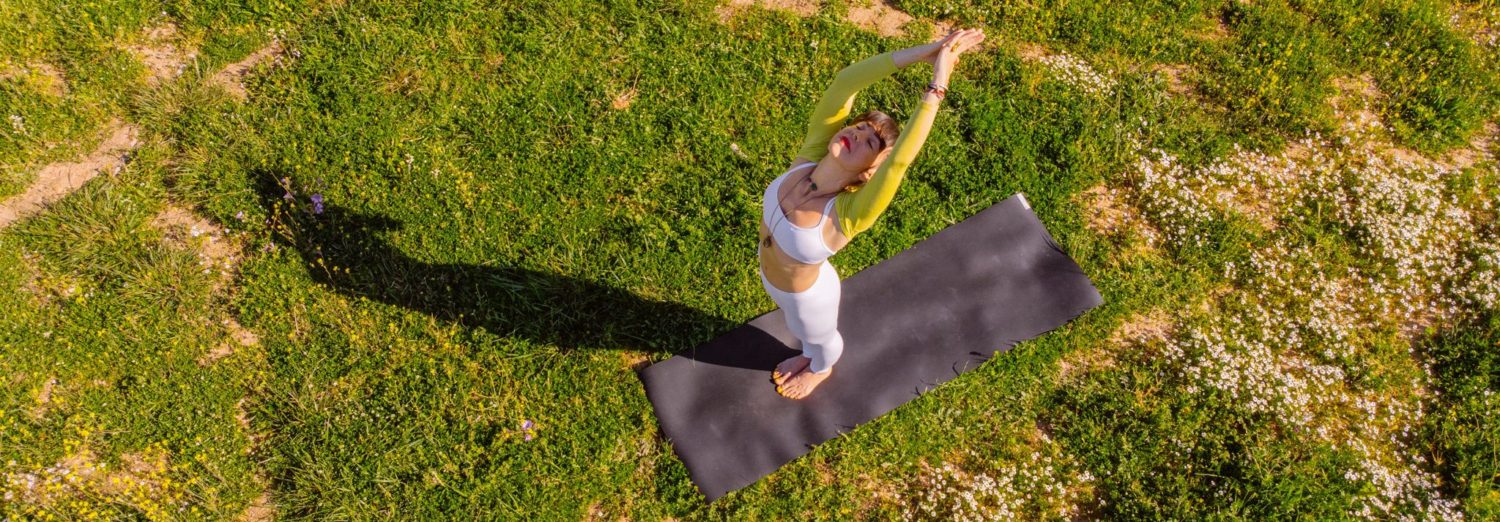
Yoga is the journey to self-realization, not a choose-your-own-adventure journey. You can’t choose the parts of the practice that are comfortable and the least triggering so you can stay warm and fuzzy. You have to examine and explore, uncover and expose so that you unload in order to reload, don’t you? There are essentially four paths of yoga, but all lead to the ultimate realization of the capital S; Self. All parts are important in order for this journey to happen correctly and the two most important aspects of yoga are Abhyāsa and Vairāgya.
Abhyāsa and Vairāgya are like two pillars that hold the foundation of yoga together. They are the wings of a yoga practitioner. Abhyāsa is a Sanskrit word that means practice. Vairāgya means detachment. In today’s world, Abhyāsa seems easy to do because you can find a yoga studio almost everywhere and online. Vairāgya seems easy to practice because you can easily sign up for a cleanse and “detach” from the cravings for food. Right? Not quite.
What is Abhyāsa
Abhyāsa means to practice. In the Yoga Sutras, Sutra 1.2, Patanjali states that “The restraint of the modifications of the mind-stuff is Yoga.” In order to restrain the mental chatter you must practice two things: Abhyāsa and Vairāgya. He then states in Sutra 1.14 that there are three qualifications to Abhyāsa; “Practice becomes firmly grounded when (1) well attended to for a long time, (2) without break, and (3) in all earnestness.” You must always be at it. Practicing for 30 minutes a day and then closing the book until the next day does not make a Yogi. You must constantly be watching, and scrutinizing every word, thought, and action.
Unfortunately, we want immediate results and so now practice takes on even more qualities like perseverance and dedication. We are told to do these specific exercises in order to heal and after a few days, we complain they are not working. We must practice every day for a LONG TIME. (without ending basically!) WITHOUT BREAK. When someone says that they are a yogi and they love yoga and they have been practicing on and off for 10 years this is breaking the first 2 qualifications, isn’t it? If a doctor is to tell you they have been practicing medicine on and off for 10 years, would you make an appointment with them? IN ALL EARNESTNESS. This means with full heart, full attention, full faith, and full intention. If you want self-growth, be serious about it.
What is Vairāgya
Vairāgya is detachment, dispassion, or letting go. It may seem difficult in today’s modern world. Everyone is used to practice, practice, practice, and adding, adding, adding that we forget that we must remove and let go in order to create. In Sutra 1.15, Patanjali states that “The consciousness of self-mastery in one who is free from craving from objects seen or heard about is non-attachment.” The mind identifies a desire and becomes attached mainly through the eyes and ears first. Then it won’t stop until it figures out how to have that desire. In the Bhagavad Gita, Lord Krishna says that we should perform our duties or actions without any attachment to the outcome.
Vairāgya literally means “colorless,” and we should not mistake it for meaning indifference. Every desire creates color in our minds or a wave in the calm sea. The more waves (desires), the more commotion in the sea (mind). The more desires in our human life the more we are binding ourselves. In old Vedantic scriptures, they say that even the desire to be liberated is a bondage. It’s difficult yes!! But like anything, it takes awareness, constant scrutinizing, and work.
The Misunderstanding of Vairāgya
Vairāgya can be perceived as scary because it feels or sounds as though you are “giving up” something. The real thing you are letting go of is something that is not adding value to your life or conducive to self-growth. A perfect example is someone who doesn’t want to drink alcohol anymore because they feel horrible and unproductive the next day, but they feel that they won’t be able to connect socially to people if they don’t have a drink once in a while. Often it feels like the fun and charm will be lost from life if we start to give up things we love. This is the illusion of the word detachment. It’s not about not having; it’s about not desiring. The secret is to be desireless in order to be liberated.
And let me add one more thing: it does not mean that you can’t have any goals in life. It just means to NOT be attached to the outcome.

How to Practice Abhyāsa Today
The first word that comes to mind is Commitment. Commit to your practice. Every day, do something that brings you closer to self-realization.
- Read and study the Yoga Sutras, Bhagavad Gita, or Ancient Scriptures
- Practice Asana (poses), Pranayama (breath), and Meditation in your daily routine
- Take a course, training, or workshop
- Write your practice in your daily planner so it becomes part of your day
- Challenge yourself to 30 days of yoga practice to initiate a new habit!
How to Practice Vairāgya Today
- Journal about what you feel attached to or things that you could get attached to
- Read this list as part of your practice so you can bring awareness into moments you may encounter some attachment
- Practice asana without expectations or getting attached to how it “should” be
- Accept what you can’t control. Release the grip.
Abhyāsa and Vairāgya
They are both complementary practices that knit together effort and ease. There is an effort to practice every day and an ease when you don’t attach to the outcome of the practice. Abhyāsa teaches you to stay disciplined on the path of mental clarity and stability and Vairāgya teaches you to stay present and not be distracted by desires. Keep practicing!

